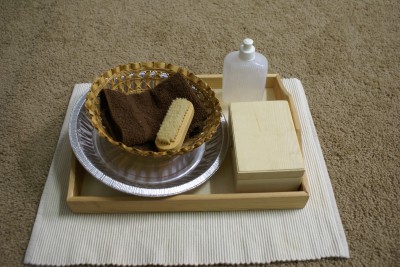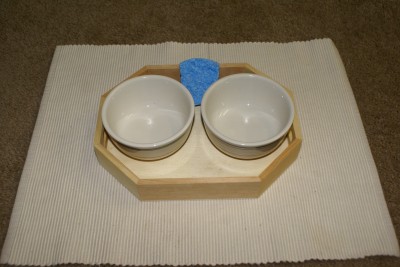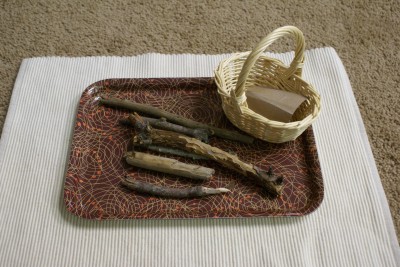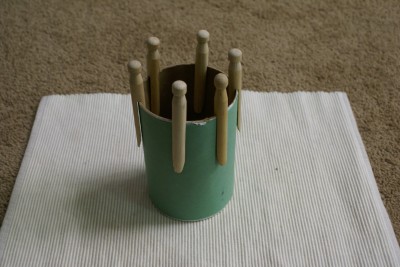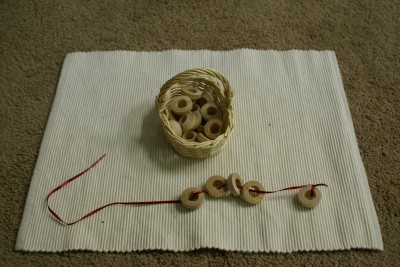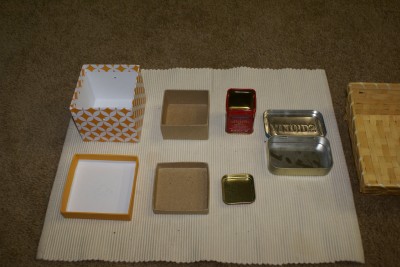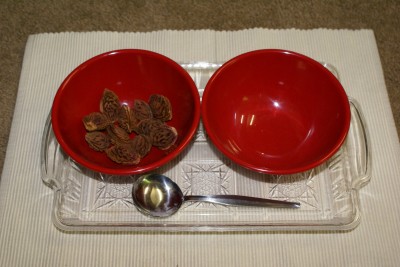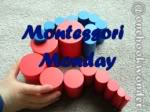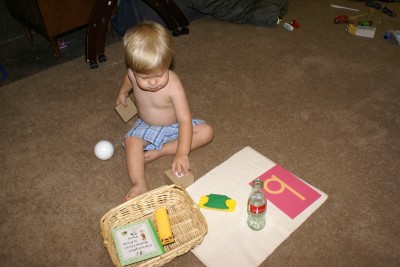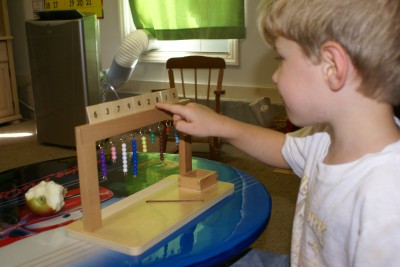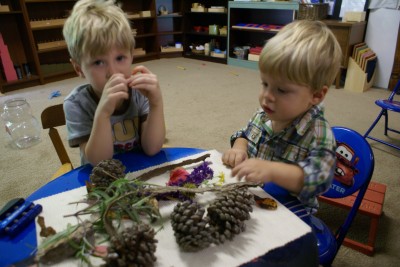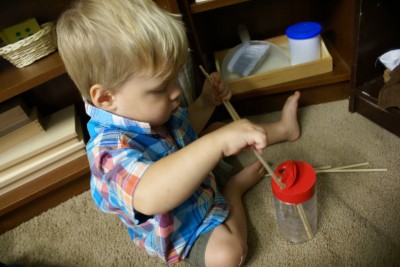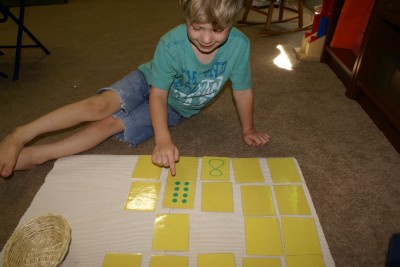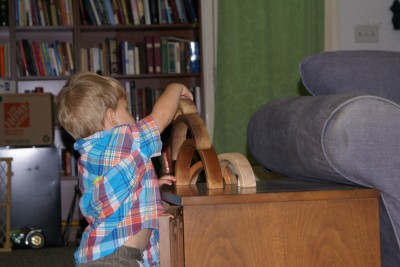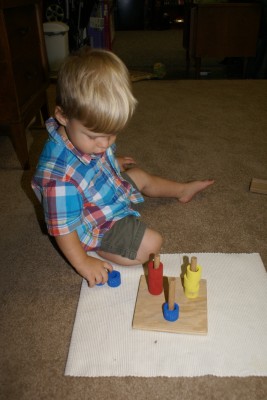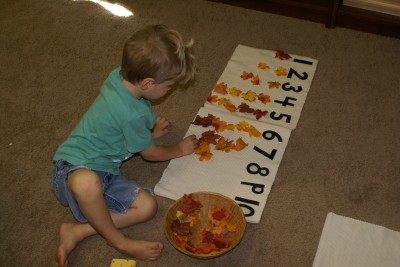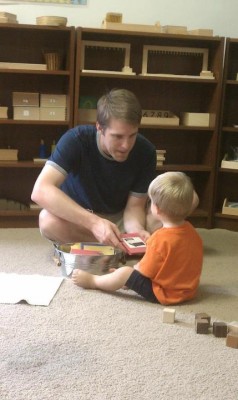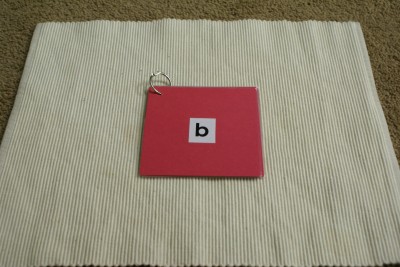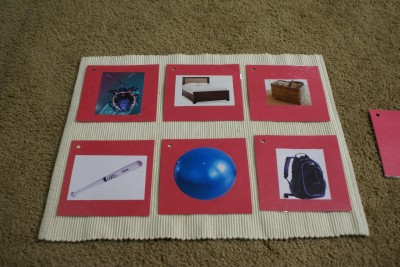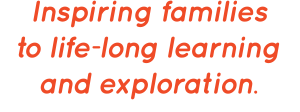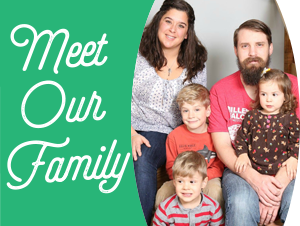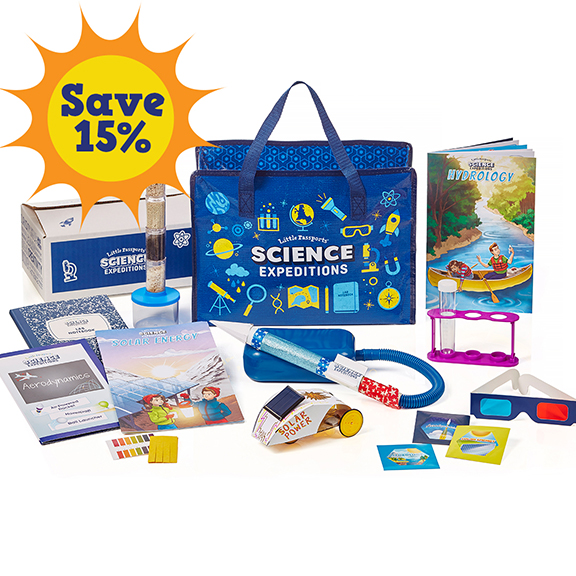One of our favorite things about our morning school routine is reciting the Poem of the Month. The idea originated when I realized how much I missed reading poetry and prose (my undergrad is English) and wondered how I could incorporate it into our homeschool. Thus, the idea to learn a poem a week together was born. I was quite ambitious with a poem a week and quickly realized I needed to scale back to a poem a month.
Our Poetry Corner
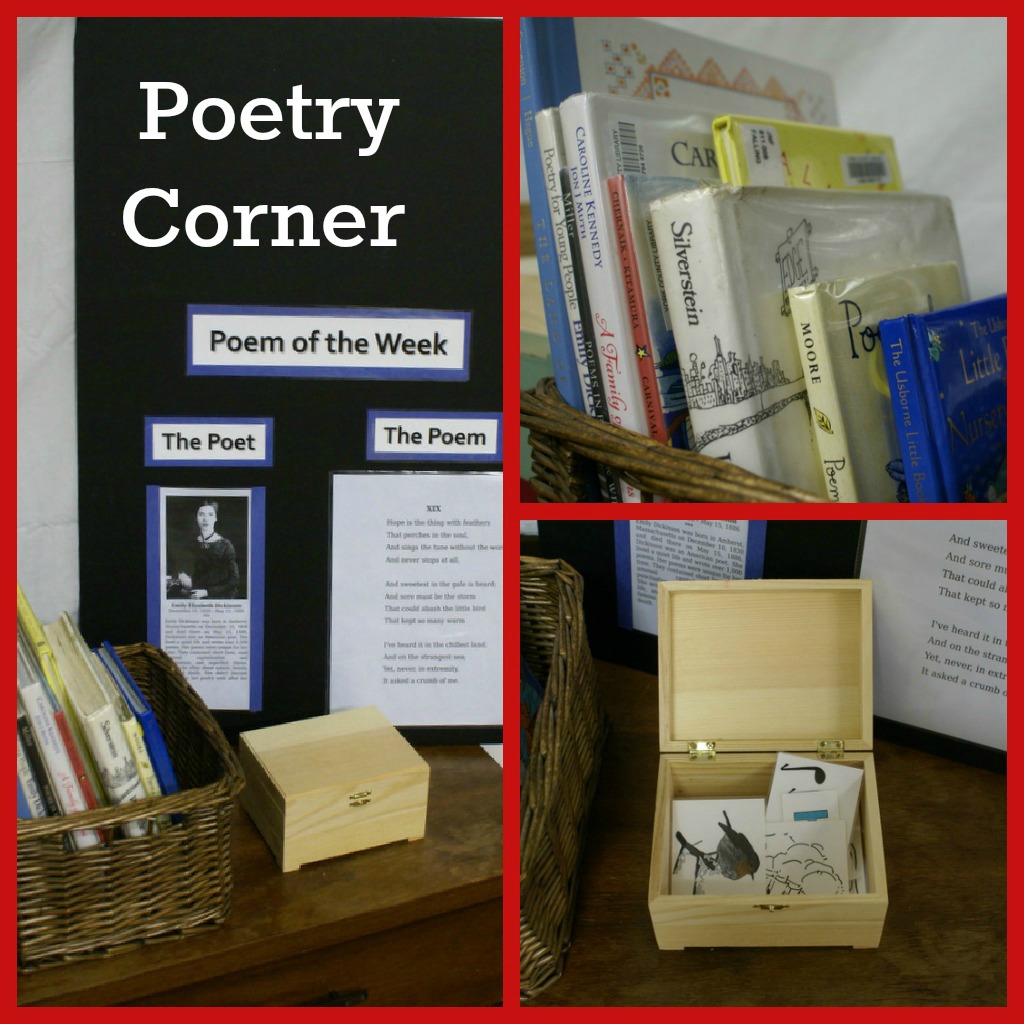
Next to our language area, I’ve set up a small Poetry Corner. We have our poster board with the poem we’re learning for the month, a picture of the poet, and a mini biography of the poet. There’s also a basket with a few children’s poetry and rhyme books. Next to the basket is a small box that holds our key word picture cards.
Each morning after our calendar, one of the kids will take the board down while the other grabs the box and takes out the key word picture cards. As we recite the poem, the boys lay each key word picture card as we say the word. We usually recite the poem 2 – 3 times depending on interest.
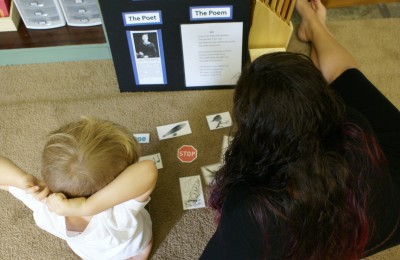
When introducing a new poet and poem, I’ll say the poet’s name and ask them to repeat it. Then I’ll read the mini biography. I don’t expect them to recall specific details like their style of poetry. This month’s poet is Emily Dickinson and Joey knows her name and that she’s no longer living.
After introducing the poet, I’ll lay out the picture cards and say what each of them are or represent. For this month, a picture of a bird perched on a branch represents the word perch in the poem. I’ll tell them, “This is perch.” I’ll recite the poem once and the second time I’ll invite them to say it with me. Then we’ll say just the first stanza again.
As the boys are putting away the cards and the poetry work, I’ll repeat the poem a last time. This way they are hearing it and becoming more familiar with the poem without having to try and say it each time. We aim to learn a stanza a week. When I picked our poems for the year, I looked for poems that would be manageable. Some are 2 – 3 stanzas, while others are only a couple of lines.
***
September’s Poet & Poem

This month our poet is Emily Dickinson and her poem “XIX,” better known as “Hope is the thing with feathers.” The Poetry Foundation has a nice video with Claire Danes reciting the poem and a little girl doing the sign language for the poem.
Hope is the thing with feathers
That perches in the soul,
And sings the tune without the words,
And never stops at all,
*
And sweetest in the gale is heard;
And sore must be the storm
That could abash the little bird
That kept so many warm
*
I’ve heard it in the chillest land,
And on the strangest sea;
Yet, never, in extremity,
It asked a crumb of me.
***
Below you’ll find a free download/printable with the poem, mini poet bio, the key picture cards, and info sheet.
Poem of the Month – Emily Dickinson Download
Key Word Picture Cards – “Hope is the thing with feathers…”
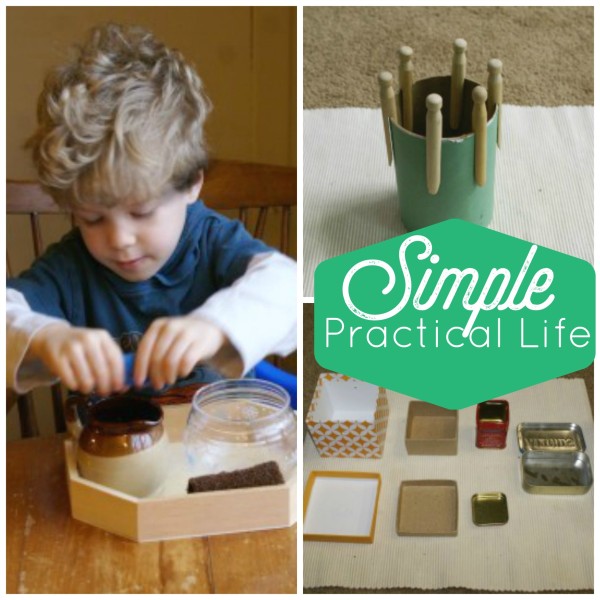 We didn’t get to much school last week, since I’m nearing the end of this pregnancy I’ve been resting and nesting. Here’s our practical life from September.
We didn’t get to much school last week, since I’m nearing the end of this pregnancy I’ve been resting and nesting. Here’s our practical life from September.

